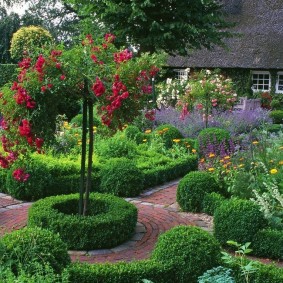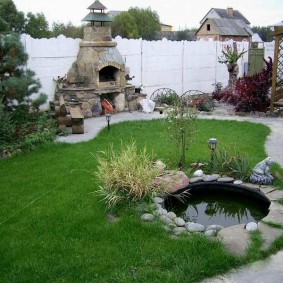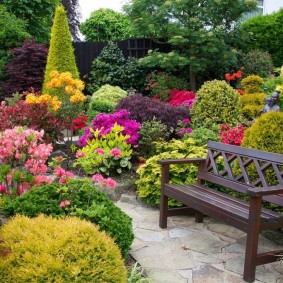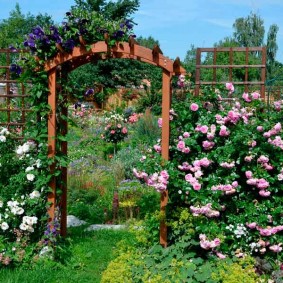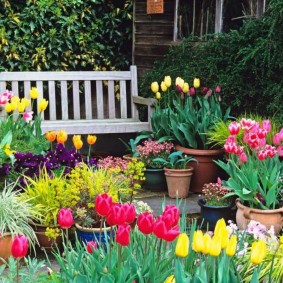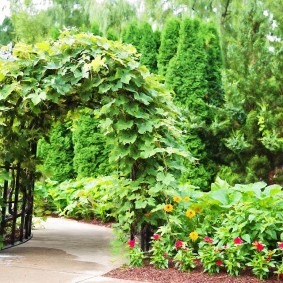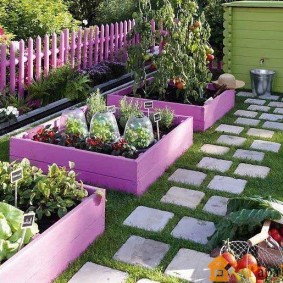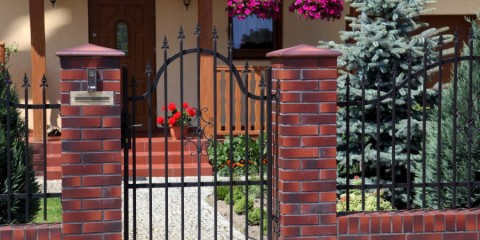 Landscape design
Lighting options for a country house and a summer cottage
Landscape design
Lighting options for a country house and a summer cottage
A garden plot of six acres is a small part of the land, the size of which is approximately 15 × 30 or 20x30 meters. To make a plan of this site is quite hard work, which requires an appropriate approach. Start planning with wishes and preferences. All people have different tastes, so the design of the garden is usually considered with an individual approach, based on the personal wishes of the person. Planning drawings are made with one's own hand, the scale of the drawing is approximately 1 to 500. The landowners are given an act on the land where they need to indicate the exact dimensions of the plot.

Even a small summer cottage can be interestingly designed and turned into a chic garden.
Before building, you need to consider the following criteria:
- Shape of the plot;
- Smoothness of the relief;
- Nuances in the location of nearby sites.
One of the right decisions when planning the design of a site is to adhere to a certain style. The design of a garden plot is a concept, a semantic image or a keynote. Each of them has its own attributes and everything in it is tastefully selected. There are many styles, and each one represents a variety of playback options. Consider the main ones.
Japanese style
Content
In the Japanese style, it is believed that the garden is a reflection of the soul, which is why its smallest detail is significant in its design. Furniture with a hint of Japanese direction or painted characters will not give the garden a Japanese-style look. This style implies the embodiment of beliefs and traditions, and therefore is considered the most sensitive of all. Basic worldview principles:
- Spirituality;
- Harmony;
- Symbolism;
- Naturalness.
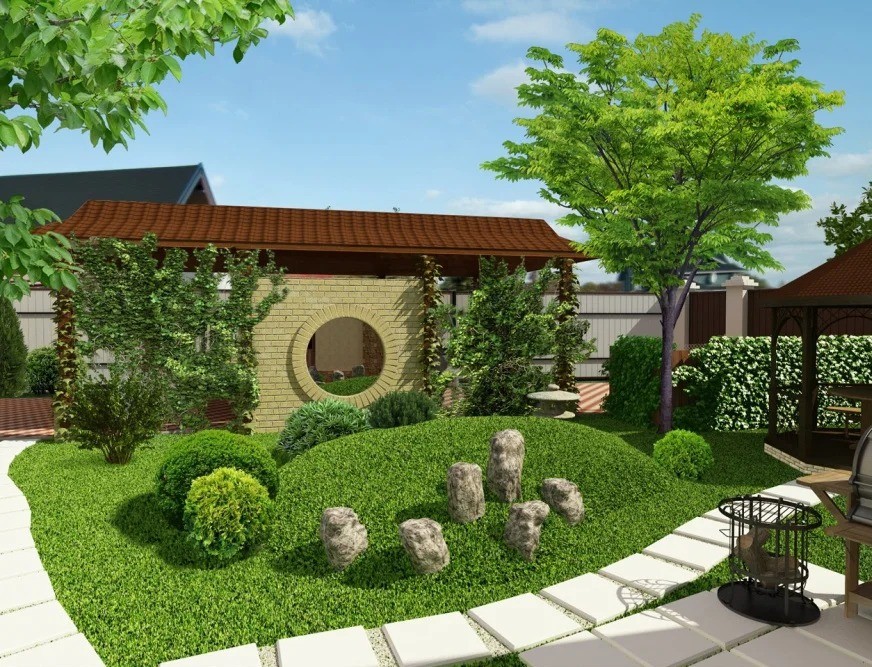
The layout of a summer cottage largely depends on the purpose for which this land is used.
There are also types of Japanese gardens:
- Temple;
- Palace;
- Gardens at the apartment building;
- Gardens of the tea ceremony;
- Abstract.
The last three types are considered the most basic and often used.

On any site there is a small garden, a recreation area, a place for household needs and residential buildings.
Japanese is a very voluminous style, so even the smallest section should contain the whole world. Zoning rules are very simple. The site should have either a square or rectangular shape, the lines and the transition should be smooth. Everything should be unique, that is, no part of the garden should be similar to the other. The center of the garden is stones or a pond.

If you need an extensive recreation area, and the owner likes to plant flowers, then you should allocate maximum space for these needs.
The Japanese garden should be in the same color scheme, mostly these are dim colors, and gray, green and brown. White color is not recommended at all, since in Japan it is the color of mourning.
The paths in such a garden are all arbitrary and have smooth bends, no angles! For paths, natural wood or cobblestones are used.
The Japanese garden implies solitude and peace. That is why high stone fences are permissible. Such a fence will serve as an excellent background for the overall picture of the garden.

The main reference point in planning should be a residential building.
The main technique of this style is mirroring. It is obtained from ponds. Water should reflect all the beauty of the garden, making the illusion of infinity. Near the pond you can put a flashlight.Islets with small bridges are often used, and they fill the pond with boulders. There are several types of ponds:
- Tsukubai - vessels made of stones filled with water, in which various plants are built.
- “Ringing” waterfalls - a waterfall is created that makes a loud and clear sound. The material is only natural stone.
- Kare-sansui is a dry pond without water, made from sand or pebbles.

If the house has already been built or the landlord has decided exactly how to position it, then you should think over the paths - the general layout of the plot will depend on them.
English style
Benefits:
- Sculptures;
- The house is located deep in the garden;
- The garden is not immediately visible;
- Bright flowers planted near the house;
- Placement of arbors at the intersection of paths;
- Old and tall trees.

If the area is 6 acres, then it is worth the most efficient use of each square meter.
This style involves a humid low area with large trees, and due to this shady. The shape of the site is used absolutely any. We advise you to take this style only to the plot of 10 acres, but this style can be embodied in six acres. The walls of the house should not be evident, you can use girl's grapes for landscaping.

No matter how interesting the design project may be, it is, first of all, based on practical goals.
One of the main features of the English garden is the lawn. It is so popular that even tracks are made of it. The traditional element of this garden is a pond, especially if it is overgrown. The pond can be decorated with weeping willow, forget-me-nots, kaluga, Siberian irises and other plants. There are few flowers in the English garden. They are usually variegated and planted near the house. An English garden is impossible to imagine without roses.

The site should be convenient for work and rest - too narrow passages should be avoided.
This garden uses ceramic tiles, which you can mostly paint yourself with specialized ceramic paint. Lay this tile among stone and brick luggage.
The main colors of the English garden are green and all its shades.

In order for the site to become more spacious visually and to be as convenient as possible, it is important to correctly zon the space.
Accessories of this style are antiques, benches located under the trees, and handmade products.
Country style
The rustic style emphasizes the proximity and beauty of nature, while there is an atmosphere of comfort.
Features:
- Garden and flower beds that grow next to each other;
- The rustic beauty of nature;
- A mottled and bright picture;
- Naturalness.

If you want the area to look bigger, then you need to avoid high barriers.
The main idea is that the garden should look like nature itself worked on it, and not a person, for example, a fence twined with plants, an old tree bench, daisies and cornflowers growing near the house, wild and simple varieties of flowers are very popular .
The house should also be entwined with greenery and flowers, (siding under a tree is very popular today). Furniture (benches, gazebo) for the garden can be made of wood. Oak, cherry, birch, linden will last a very long time. From stumps you can make a table.

Any part of the site should be well visible, but if partitions are needed, it is worth using nets with climbing plants and shrubs for this.
When choosing this style of garden, you do not need to change the terrain, the ravine can be turned into a small pond, the rise can be turned into a flower bed.
The fence is usually placed wicker. And forged parts perfectly decorate the gate. On the site you can place a well, it will serve both for beauty and for business. Desolation and vastness should be apparent. A colorful landscape will cheer up the hosts and guests.

Fence around the site or similar tall barriers inside the garden will visually reduce the already small space.
Minimalism
Simplicity is the main principle of minimalism, but the style is very expressive and beautiful. And picking up components that will work perfectly with each other is not so simple. The fences are low, on the site there is no division into zones. Here the principle of symmetry and regulation is considered. The most important is the expressiveness of boundaries and harmonious combination. Minimalism shows that nature is inconsistent, and over time everything in it is updated.
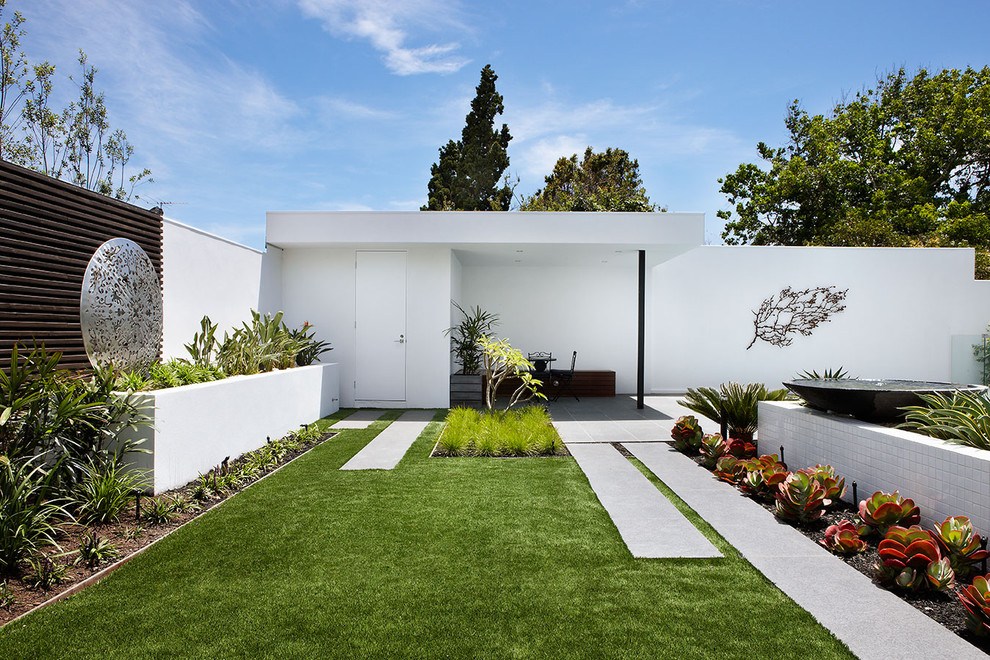
You should also allocate a place for free territory with a lawn.
The garden, made in the style of minimalism, cannot boast of the brightness and abundance of plants. Commonly used concrete, brick, metal or wood. Differences in the relief will only play into the hands of such a design. A small pond is appropriate, but fountains are not welcome. The number of plants is not so important. Here, their color scheme is considered. 2-3 plants of different varieties look stylish, but in the same color scheme in combination with stones.

The site can also be used for relaxation - to have picnics and sunbathe.
French style
This style is called formal; symmetry is important in it.
Features:
- The garden is located on a flat plane (there are no differences in relief);
- The house is in the center, and from it there are paths in different directions;
- Symmetry or geometric design;
- Live and well-kept hedges;
- Round pools and fountains;
- Trees are planted in a line;
- Pavilions and statues;
- Bushes and stunted plants grow near the house.

There are many interesting solutions for arranging the site, many of which can be done with your own hands.
In the French style are the stalls of lawns or flower beds. The hedges are patterned. The farther from home, the easier the flower beds. Flower beds are filled with sand or gravel. Linden, chestnut, beech, elm - these are the most popular trees in this style, which should be cut to give them a shape. The main gamut of colors - lilac, pink, blue and white. Carefully consider the arrangement of flower beds, fountains, sculptures, paths that will connect different parts of the garden. A symbol of French landscape design is lavender and dahlias.

Many people like to have ponds, fountains or waterfalls on the site.
Hi-tech style
This style allows you to embody completely different ideas that are close to high technology. The main advantage is cosiness and comfort on the site. This style is individual and high-tech.

Even in a minimalistic environment on a small site, artificial ponds will attract attention and make space interesting.
Features:
- It is applied on any relief and the form of a site;
- The garden is perceived as a whole;
- The severity of forms;
- Straightness, new materials and notes of minimalism;
- Combined layout allowed;
- Material: concrete, stone, glass, ceramics, plastic, polycarbonate. And only occasionally wood.
In the high-tech style, white, blue, black, gray, silver, and purple are used.

Along the tracks, it will not be superfluous to install small flashlights, as they will perform both a practical and a decorative function.
The overall picture of the garden should be rather restrained. Lighting devices in this style play an important role. They emphasize style. Therefore, we advise you to place a lot of lights, both electric and solar. Unusual fixtures are welcome.

When planting flowers in a small area, it is better to arrange them throughout the space.
You can create optical illusions using mirrors. The fence can be made of nets, pipes. Water occupies an important place. Artificial ponds that have a clear concrete and metal shore are used. The tracks are usually straight, but sometimes diagonal and zigzag. Their coverage should be smooth. In the decor of the garden are used: containers for flowers, poles, geometric shapes, mirrors, lights, multi-colored stones. All these decor elements should take their place.Ferns, dahlias, lemongrass, cypress, chestnut, delphinium and the like are planted on the site.

In addition to flowers, green plants also have a decorative function.
Useful Tips
- Engage all the corners of the site, put in them a bench, flower garden or podium. Empty corners limit space;
- If you block the area with screens or partitions, then visually it will seem larger;
- If possible, change the terrain, make differences on the site, this will change its appearance;
- Give the site rounded shapes (gazebo, lawn, garden), as the element outlined by the corners seems even smaller.

In small suburban areas, it is customary to actively use a variety of climbing plants.
Using the information provided, it is possible to make the small area - 6 hundred parts look harmonious and practical.
VIDEO: Landscaping of a plot of 6 acres.
